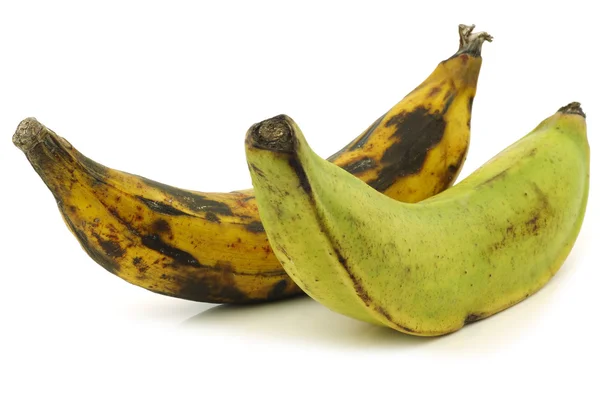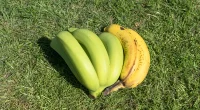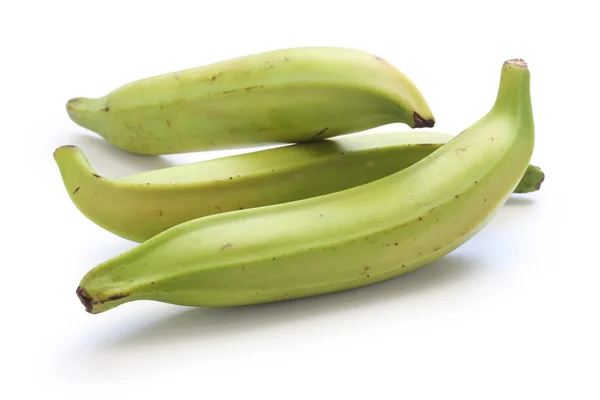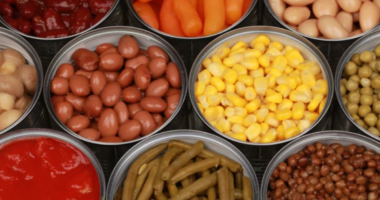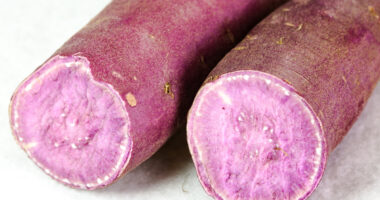Nutritional difference between ripe and unripe plantain – Plantains are a member of the banana family, but they are much larger and firmer than bananas. They are usually cooked before consumption and are a staple food in many countries, especially in Africa, Asia, and South America. They are rich in nutrients such as fiber, vitamins, and minerals, and provide many health benefits. However, there is a significant nutritional difference between ripe and unripe plantains.
Nutritional Benefits of Ripe Plantains

Ripe plantains are a rich source of nutrients and provide many health benefits. They are an excellent source of dietary fiber, which can help to regulate digestion and prevent constipation. Ripe plantains are also rich in vitamins and minerals, including vitamin C, potassium, and magnesium. Vitamin C is an antioxidant that helps to boost the immune system and protect the body from free radicals. Potassium is an essential mineral that helps to regulate blood pressure and maintain healthy heart function. Magnesium is another essential mineral that is involved in over 300 biochemical reactions in the body, including energy production and protein synthesis.
Nutritional Benefits of Unripe Plantains
Unripe plantains also have many nutritional benefits. They are an excellent source of dietary fiber, which can help to regulate digestion and prevent constipation. Unripe plantains are also rich in vitamins and minerals, including vitamin C, potassium, and magnesium. However, unripe plantains are much lower in sugar content than ripe plantains, making them a better option for people with diabetes or those watching their blood sugar levels.
Comparison between Nutritional difference between ripe and unripe plantain
While both ripe and unripe plantains are rich in nutrients, there are significant differences between them. Ripe plantains are higher in sugar content than unripe plantains, which makes them a better option for people who need quick energy, such as athletes or people who engage in strenuous physical activity. However, ripe plantains are also higher in calories, which makes them a less suitable option for people who are trying to lose weight or maintain a healthy weight. Unripe plantains, on the other hand, are lower in calories and sugar content, making them a better option for people who are watching their weight or their blood sugar levels.
Glycemic Index of Ripe and Unripe Plantains
The glycemic index (GI) is a measure of how quickly a food raises blood sugar levels. Ripe plantains have a higher glycemic index than unripe plantains. This means that they can cause a rapid spike in blood sugar levels, which can be problematic for people with diabetes or those trying to manage their blood sugar levels. Unripe plantains, on the other hand, have a lower glycemic index, which means that they are digested more slowly and can help to maintain stable blood sugar levels.
Cooking Methods for Plantains
Plantains can be cooked in a variety of ways, including boiling, frying, baking, and grilling. The cooking method can affect the nutritional content of plantains, so it’s important to choose a healthy cooking method. Boiling or steaming plantains is a healthy option that can help to preserve their nutritional content. Frying plantains, on the other hand, can increase their calorie content and reduce their nutritional value.
Plantain Recipes
Plantains can be used in a variety of recipes, from sweet to savory. Some popular plantain recipes include:
- Fried plantains: ripe plantains can be sliced and fried in oil until crispy.
- Plantain chips: thinly sliced plantains can be baked or fried to make a healthier alternative to potato chips.
- Plantain fritters: mashed ripe plantains can be mixed with flour, eggs, and other ingredients to make fritters that can be fried or baked.
- Plantain porridge: ripe plantains can be mashed and mixed with milk and other ingredients to make a creamy and delicious porridge.
- Stewed plantains: unripe plantains can be sliced and simmered in a flavorful broth until tender.
Health Benefits of Eating Plantains
Eating plantains can provide many health benefits, including:
- Improved digestion: plantains are a rich source of dietary fiber, which can help to regulate digestion and prevent constipation.
- Boosted immune system: plantains are rich in vitamins and minerals, including vitamin C, which can help to boost the immune system and protect the body from free radicals.
- Healthy heart function: plantains are a good source of potassium, which can help to regulate blood pressure and maintain healthy heart function.
- Improved energy levels: ripe plantains are a good source of quick energy, making them a good option for athletes or people who engage in strenuous physical activity.
Risks Associated with Eating Plantains
While plantains are generally considered a healthy food, there are some risks associated with eating them. For example:
- Allergic reactions: some people may be allergic to plantains or other members of the banana family.
- High calorie content: ripe plantains are higher in calories than unripe plantains, which can be problematic for people trying to lose weight or maintain a healthy weight.
- High sugar content: ripe plantains are higher in sugar content than unripe plantains, which can be problematic for people with diabetes or those watching their blood sugar levels.
FAQs
A: Yes, plantains are a good source of potassium, which can help to regulate blood pressure and maintain healthy heart function.
A: While ripe bananas can be eaten raw, ripe plantains are not typically consumed raw due to their starchy texture and flavor. Unripe plantains, however, can be consumed raw if they are cooked or processed in some way, such as being mashed or grated.
A: Yes, plantains are a good source of dietary fiber, which can help to regulate digestion and prevent constipation.
A: While plantains can be a healthy addition to a weight loss diet due to their fiber content and nutrient density, they are also relatively high in calories, so it’s important to consume them in moderation and in a healthy way as part of an overall balanced diet.
A: A medium-sized ripe plantain (118g) contains approximately 220 calories, while a medium-sized unripe plantain (118g) contains approximately 218 calories. So, the difference in calorie content between ripe and unripe plantains is negligible.
A: Yes, ripe plantains do contain iron. A medium-sized ripe plantain (approximately 118 grams) provides about 0.6 mg of iron, which is about 3% of the recommended daily intake for adults. While this may not seem like a significant amount, every little bit helps contribute to your overall daily iron intake.
